- Learning time
- 40 minutes
- First play time
- 120 minutes
Giants
Designed by: Fabrice Besson
In Giants players represent the ancient people of Easter Island, building Moai statues on the coast.
The board shows the island itself, complete with multiple platforms on which to build the Moais. Players start the game with a worker, a chief and a sorcerer, as well as two tribe markers. On a given turn players bid on the available Moais for the round – which come in three sizes. Players bid both for the right to choose and the ability to build them. So the bidding is twofold – tribe markers for first choice, and workers for the ability to exercise it. If there’s a level 3 Moai available, for instance, you need to bid three workers as well as your tokens. Crucially, you don’t have to bid tokens at all and can still end up with a Moai – but without bidding any workers at all, you cannot take anything.
Having acquired a Moai you now need to move it. The next part of the game sees you place your workers on the board (which is broken into hexes) to achieve this. A level one Moai only needs one worker, whereas a level two will need two and so on. Only your chief can move any Moai by himself. If they’re handily placed, you can choose to use other players workers to move your Moai, and although this does reward them with points how you utilise these job-sharing opportunities can be key to victory.
You can place your sorcerer in a variety of special hexes on the board (he also functions as a worker) that can get you more workers, more tribe markers, or wood, which helps in the moving of Moais. He places (and effectively reserves) platforms for you to place your statues on. He can also get you hats you can place on your Moais – like the statues, they need to be moved into position by workers. Finally as well as your tribe markers functioning as coins in the bidding, they can also be used to ‘mark’ a Moai or hat that is still in transit at the end of the turn (so it doesn’t get pinched by another player!) or played to get rongo tablets. Rongos only come in halves, so you need to get two of them to actually use a rongo, which allows your chief to function as a sorcerer. Unplayed rongo tablets also get you points at the end of the game – which is over when any one player has covered all their platforms with Moais.
Scoring is simple – the black number next to the Moai each player has built gets multiplied by the level of Moai built on it. Then additional scoring for hats (red numbers) and finally complete rongo tablets are worth points too: 3 points in the original rules, but we suggest following the designer’s advice and changing that to a single point instead.
The guru's verdict
-
Take That!
Take That!
It's possible to pinch Moais (or hats) from other players if they have been left 'unmarked' at the end of a turn. But that's about as combative as it gets.
-
Fidget Factor!
Fidget Factor!
Low to moderate.
-
Brain Burn!
Brain Burn!
As the game progresses people may need time to weigh up what to bid (if anything) and where they are trying to get to on the board. But it's not a 'heavy' game.
-
Again Again!
Again Again!
The only randomness built into the game is the dice-rolling that dictate what Moais become available for a given round. But that's enough to give some very different games.

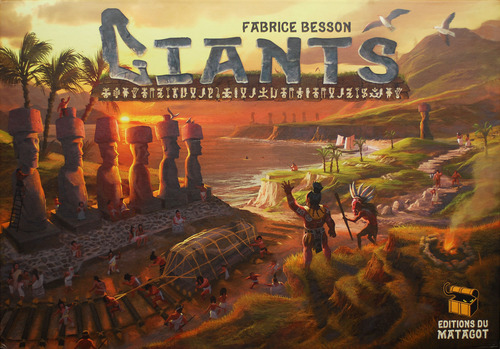
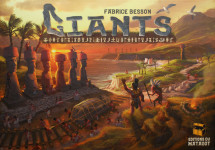
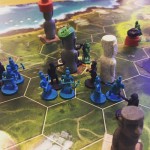

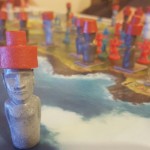




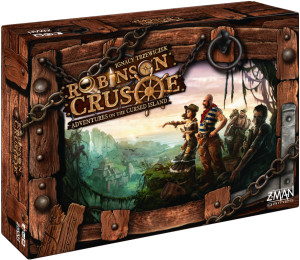
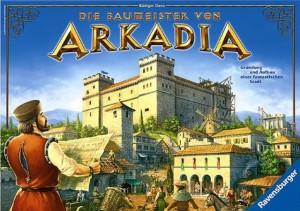
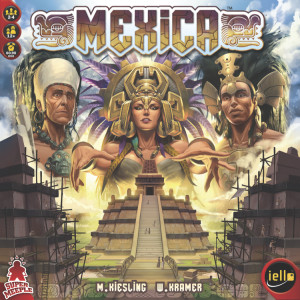
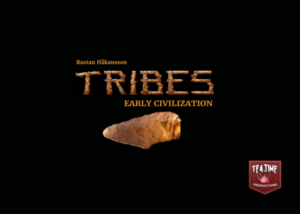
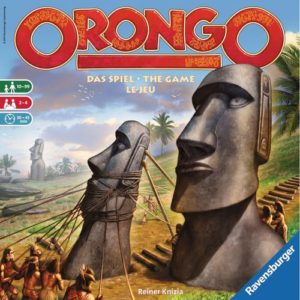
Sam says
I haven't played loads of Giants but in my limited experience of four or five plays it's a fun three-player (I imagine with more there are more opportunities for piggy-backing on people's movement networks) that combines individual planning and strategy with some (occasionally co-opted) tactical co-operation. A family game for a family of strategists!